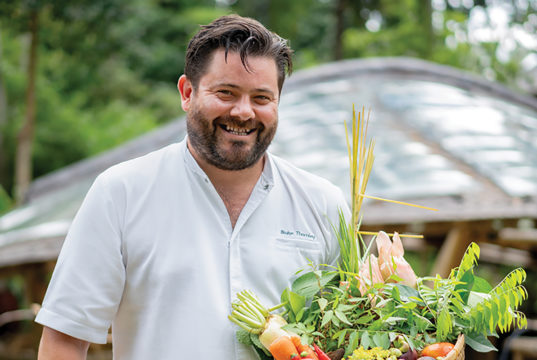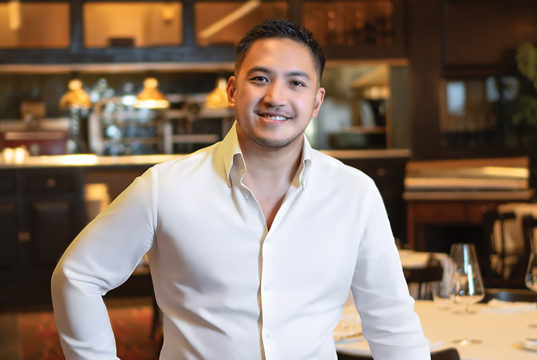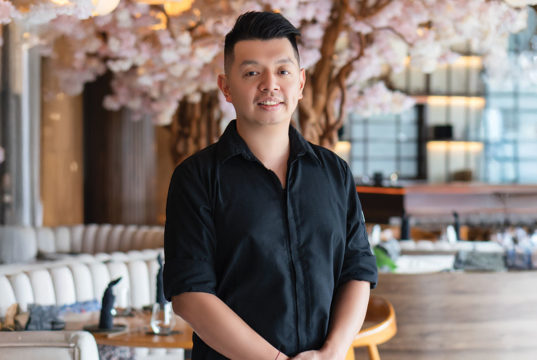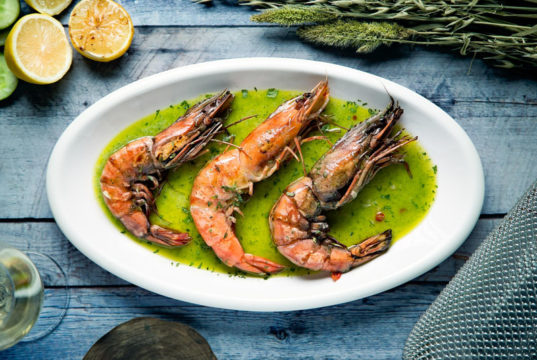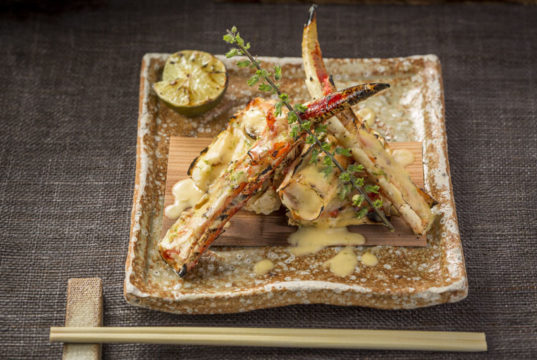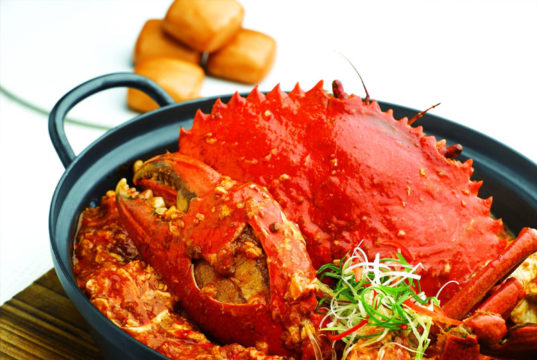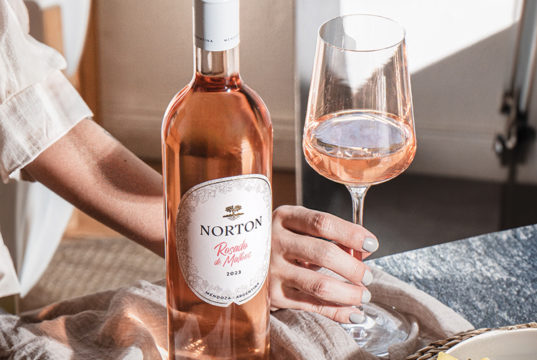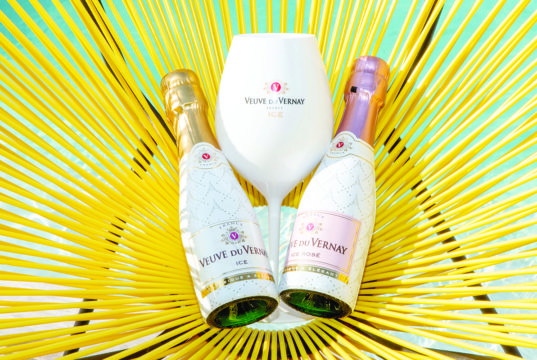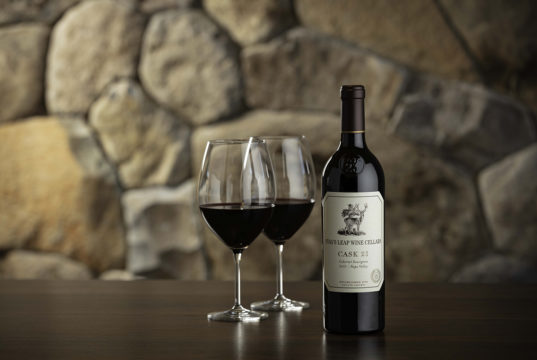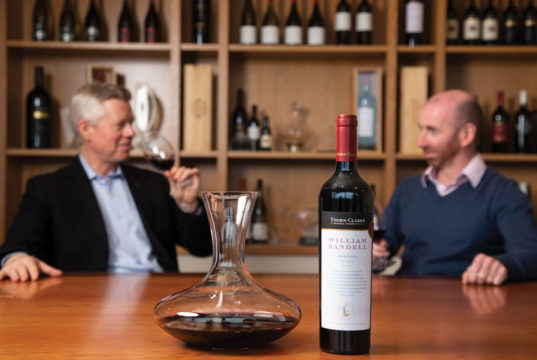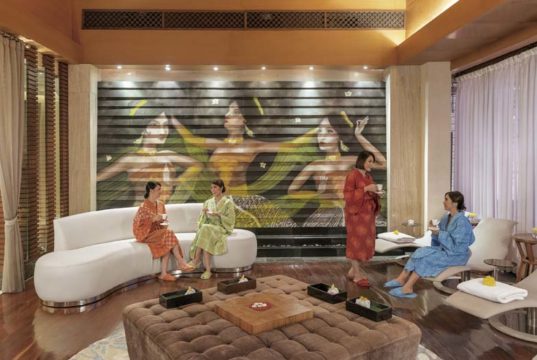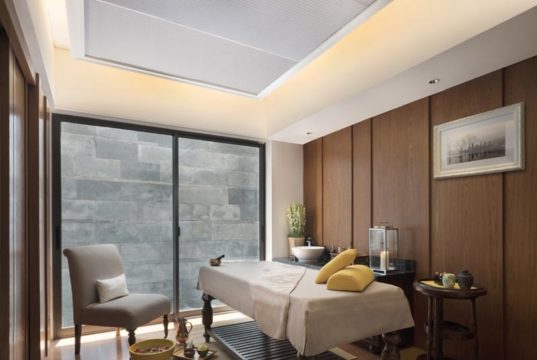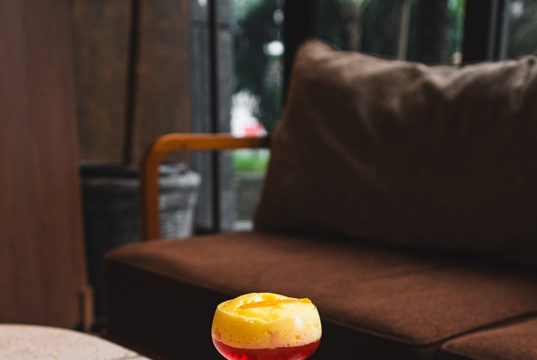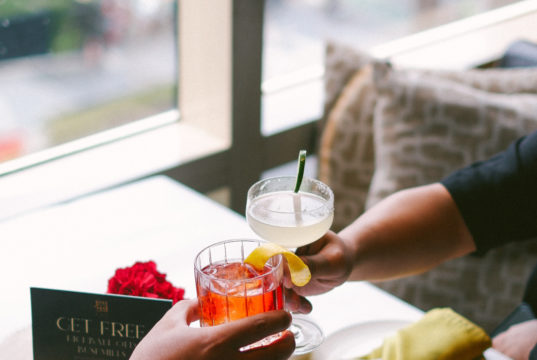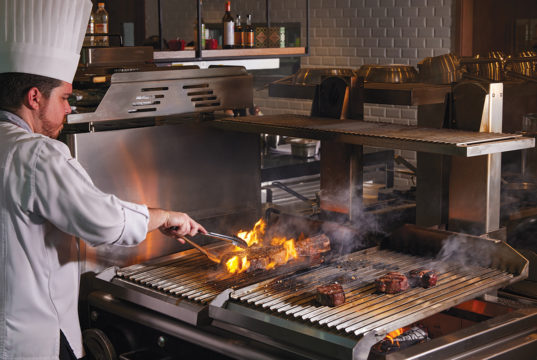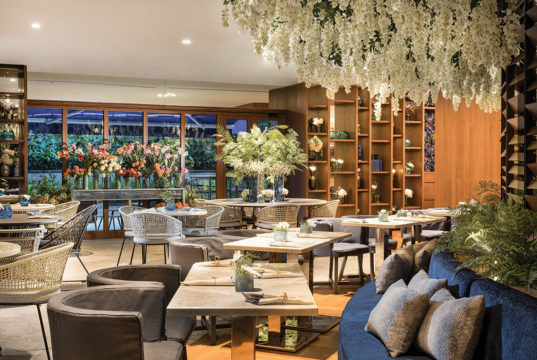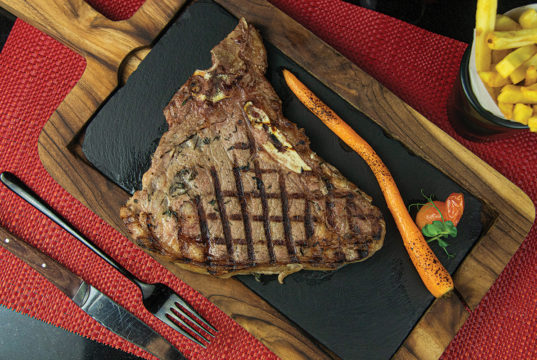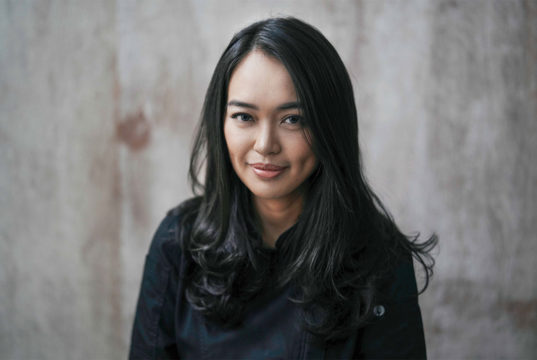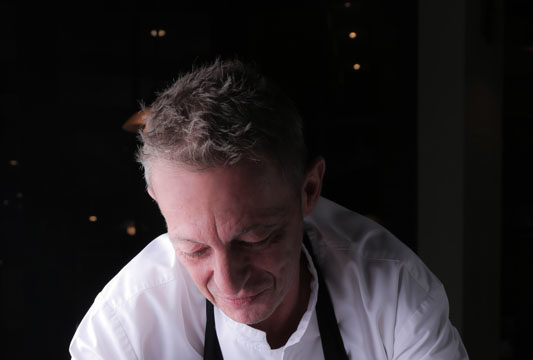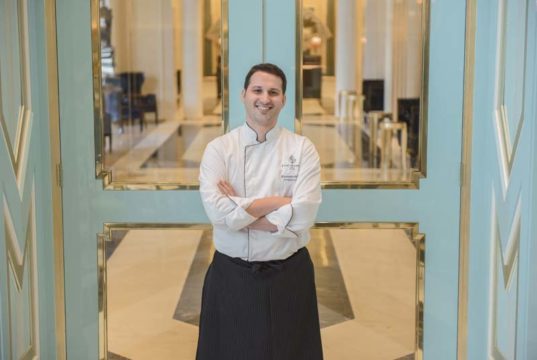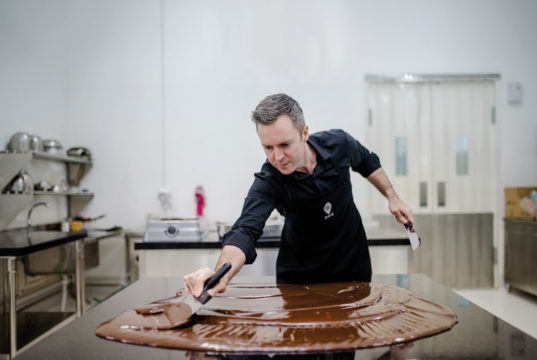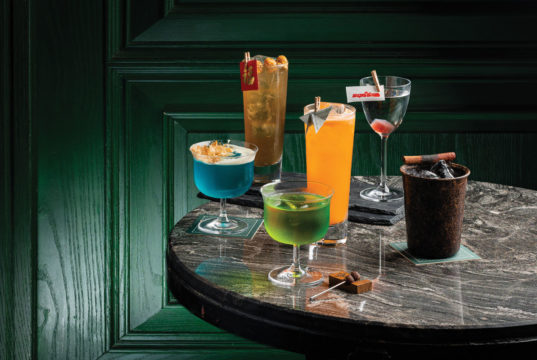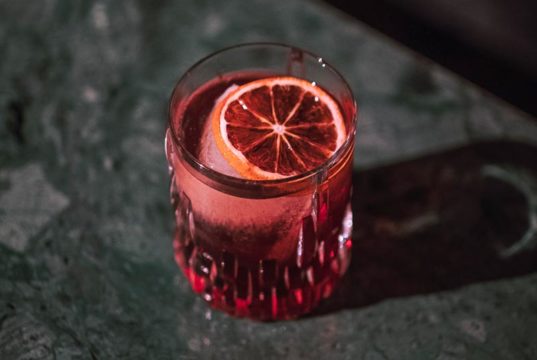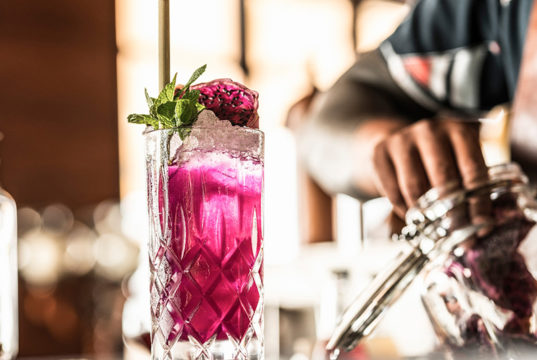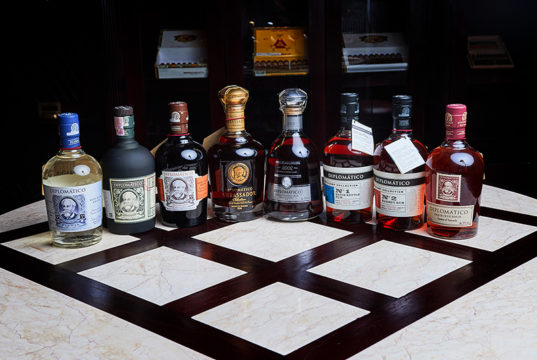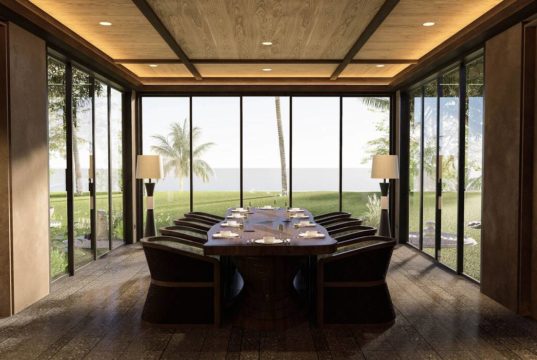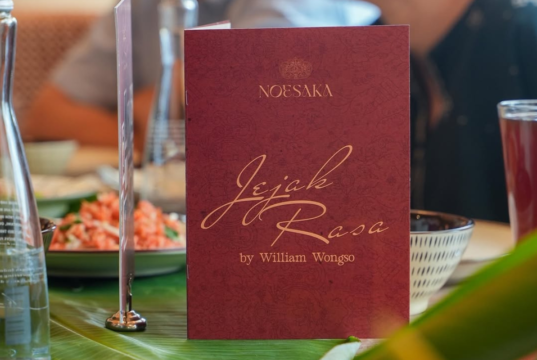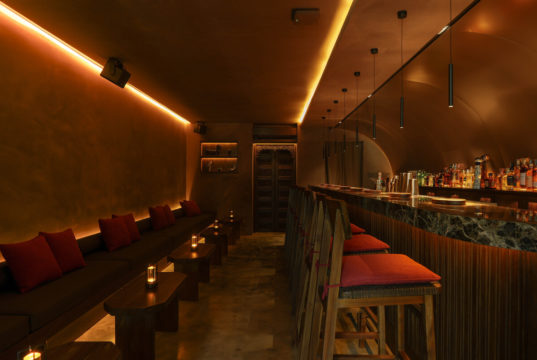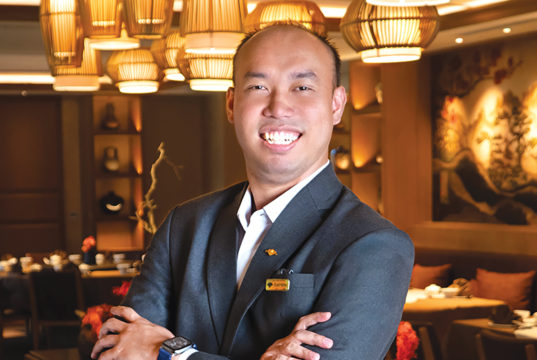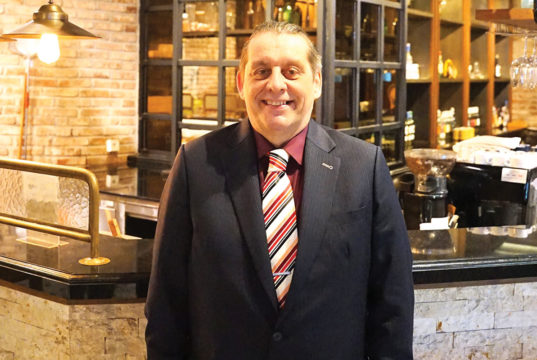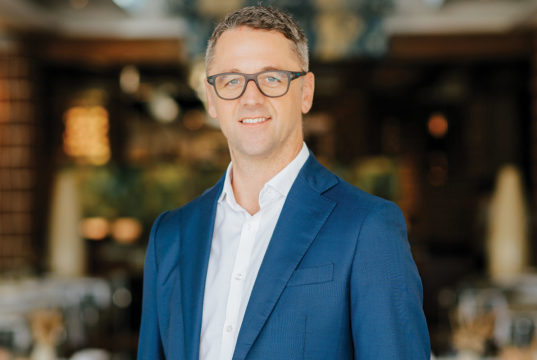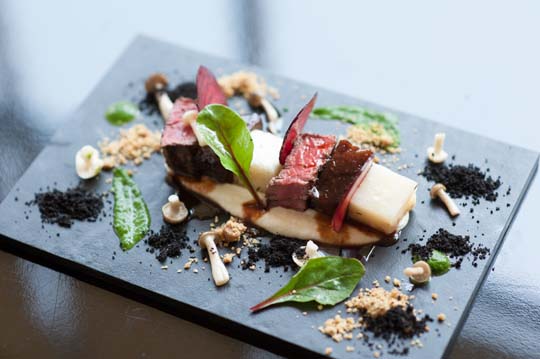
Q: First of all, thank you for taking some time off from your busy schedule for us. For the record, could you briefly share your life before Rosso?
A: Before Rosso I spent four years between Abu Dhabi and Dubai working for Shangri-La and other five-star hotels and Michelin-starred restaurants. It was really a vast market with a very large following of affluent and powerful clients. I found that people in and around the Gulf were very interested in authentic regional food, such as, of course, Italian. After that I joined Shangri-La Hotel, Jakarta. This was my first time in Indonesia and in Asia, and this is very interesting for me primarily because the palate is different so I get to play around with the flavours and twist a lot of the classical cuisines to suit the market of Asia. This was very challenging and interesting for me at the same time.
Q: Have you always known that this is what you wanted to do or was there a point in your life when you just realized?
A: Yes. Always. My first experience in the kitchen was, as you’ve guessed it, with my mother when I was little. My mother is a very capable cook. And it’s part of the culture in Sicily to cook with our mothers. This is how I first got to love cooking. Later on I spent five years at cookery school. After my diploma in 2001, I started working in a number of global restaurants. I worked in London for four years and then came back to Italy and worked in a Michelin-starred restaurant for six years. During this period I worked with big names like Giorgio Locatelli and Marco Pierre White in London and Antonio Guida in Milan, whose vicious discipline and fiery passion made my own love for cooking grew stronger.
After six years of working in militaristic Michelin-starred kitchens, you inevitably start to get exhausted. That’s why I decided to go back to five-star hotels. As an executive chef it’s great because I get to work with so many different people and learn wider facets of the business.
Q: We’ve been hearing a lot of good things since you joined Rosso last year. Tell us some new or different things that you’ve brought to the restaurant since you joined.
A: I grew up in Sicily, southern Italy. It’s a big island that primarily thrives on delicious seafood dishes, particularly fish. What was missing in Rosso before I joined was seafood and fish. It was 80 percent beef and 20 percent fish, which does not go very well with my culture. When I signed on I introduced more seafood and fish instead of beef. And our guests, luckily, started to appreciate the fish dishes more. Maybe some of them had been looking to experience more than beef all along. Even during the brunch you can see more seafood options, some Mediterranean flavours that were previously not there.
So I guess basically it’s the Mediterranean flavours that I introduced — lighter flavours. Mint, lemon, oranges, all used to highlight the main ingredients. For example, sea bass comes with fresh flavours like anchovies, lemon and oranges. We don’t use mustard or double cream or heavier sauces that might overpower the light flavour of the fish.The fish itself already presents a very nice flavour. This light goodness is what I want the guests to enjoy.
Q: How would you explain the core philosophy of Rosso and how it relates to your Italian roots?
A: The core philosophy is behind the name itself. Rosso in Italian means red. As you can see we have the colour everywhere. Red is the colour of passion and the first impression we want guests to feel is that they are welcome and to make them feel at home. Comfortable. If you want to have a special dish with a special wine, both regular and new guests are very welcome to ask.
Rosso offers different experiences at lunch and dinner. For lunch maybe you want something simpler and more direct for meetings or a business lunch. At dinner time of course you are more relaxed and you want something more sophisticated when you’re with your friends or maybe something more romantic to enjoy with your wife. Just like what we do in Italy. Simple, healthy food for lunch, and a more complex dinner when you are more relaxed in the evening.
We are offering a very distinct package of experiences that guests cannot find anywhere else. Signature cuisine, signature wine and cocktails, signature ambience, signature treatment identified with Rosso that you can’t find anywhere else. These are things people come back for. This is what we are trying to offer.
Q: What is your approach in leading your team, are you the nurturing and caring type or the more aggressive kind like Gordon Ramsay and a few other celebrity chefs?
A: Celebrity chefs are a bit different in my mind. I would say people like Massimo Bottura or Gordon Ramsay are not “aggressive” in a negative sense. They are just that passionate and perfectionist that they communicate in a way that seems hard. At the end of the day we in the kitchen all want the same thing — to prepare the absolute best for the guests.
To answer your question, I think this is my style at times. I love my job and I like everything to be perfect. Anything in the kitchen, from A to Z, has to be run according to the standards that we have. I want my crew to also feel the passion and make it their own instead of doing something just because I tell them too. For that, I may get cranky at times, I admit, but at the end of the day, when we get positive feedback from the customers, everybody is happy.
Q: What do you feel are the most challenging/rewarding aspects of your career right now?
A: I would say the most challenging aspect about my job, or any other chef’s job, is when you try to teach the staff how you want to be at the end of the service. What is your expectation or flavours you want to reach? I understand that my staff isn’t Italian.
They’re not used to even tasting these flavours — never mind recreating them. To make them understand this and to keep the consistency can be challenging. Consistency is important. Inconsistencies won’t work. And of course, product acquisition can be a problem. I have to constantly improvise and find alternatives for things we absolutely can’t import. Although I’ve been doing this for a while, it is always a challenge.
And the most rewarding aspect would be the relationship between me and the guests. I enjoy researching new recipes, experimenting, and when I think it’s good to go, presenting it to the guests. Then the guests will tell me how much they enjoy the new menu and how they love it. This is just a sensational feeling.
To create something I can be proud of that people enjoy. I cannot describe it.
Another great thing is when the team gets what you’re trying to teach them. If I come back from a one or two-week vacation and find that the flavour or the food is exactly the way I did it and the guests didn’t even realize I’m gone, that is also a very satisfying feeling. It tells me they understand. They get the standards I want to set. It’s always hard at the beginning, but when I get there, it is wonderful.
Q: You’ve been in the industry for around 20 years. With your experience, what are some of the trends or changes that you’ve seen or helped pioneer in the region over the years?
A: What I can see is the kitchen and the cuisine have changed. The culture and the people are now more knowledgeable. Everybody wants to know what they’re eating. They know what they want. There are a lot of diets: vegan, vegetarian, gluten-free. Today I’m a vegan, tomorrow I’m a vegetarian. People want many different things now.
Quantities have also changed. Back in the day people ate to not be hungry. Nowadays it’s all about smaller portions because of their diet or health reasons. Same goes for flavours. We used to have different textures. A lot of things that were previously served solid are now served in liquid or other forms. Like the tomato caprese, which is a buffalo mozzarella, I’m now presenting the cheese in cream form instead of solid. The tomato used to be wedged, now its tomato gnocchi. Olive powder, cheese foam, gelatine — these are other examples of what I mean.
Q: What or who primarily inspired you to invent the many delightful dishes in the restaurant?
A: I have my culture as my primary inspiration. I can say I have a very solid footing in southern Italian cuisine. It is always a challenge to take my culinary identity and adjust it and present it in such a way as to make dishes that the local palate can embrace.
Afterwards, the experience that I’m offering enriches the guests who enjoyed it, and in turn, their feedback — be it positive or otherwise — helps me to figure out what to do next and how to make it better in the future.
Q: How challenging is it in Jakarta to get the right ingredients you need and how do you work around that?
A: Coming from Abu Dhabi and Dubai, where there’s literally nothing growing organically around you, working in Jakarta really gave me a sigh of relief. It is very easy here to work with local organic products which can be acquired very easily. Everything I need can be in the restaurant one day after I’ve sampled and placed the order. No fuss.
Of course, there are always some items that we need to import directly from Italy, but thankfully the majority of ingredients, spices, herbs, or vegetables that we can find here work just as, if not better, than imported ones.
Our fish we get from Lombok and Bali. So many fish: barramundi, prawn even lobsters. When we need something else in particular, we have providers in Australia and New Zealand, also from the Mediterranean we bring in fish like sea bass, john dory, etc.
Q: What’s your take on the current state of the fine-dining scene in Jakarta as well as in Southeast Asia?
A: The industry is definitely growing, and the market is very strong. Lots of new and nice places opening up, new global chefs coming in, a lot of magazines like Exquisite Taste also help the industry to grow — all of these factor in to boost the industry. The people of Jakarta really like to go out and find experiences. The market is definitely thriving and I expect it will remain so for the foreseeable future.
Q: What are some of the upcoming culinary trends you see in the region and beyond?
A: The future? Good question. Organic products. For me, the winner at the moment is who has a farm outside. I imagine a future restaurant with its own garden, a farm, an area that produces its own organic products. Anything I present for your plate is grown or taken from just outside. This is the future. My cow, my fish, my artichokes, my herbs — every ingredient is 100 percent under my supervision so I can be satisfied with my cooking and I know exactly what I’m preparing for you.
Noma, one of the best restaurants in the world in Copenhagen, is closed now because they are renovating to implement this concept. They will have their own farm and they will adjust the menu according to the seasons. And I’m almost sure that this trend will be imitated by many in the world. This is how I see the future.
Q: What do you do to unwind?
A: We always try to relax when we can. We like to go to the market or even other restaurants to find inspiration. Even in my free time I can’t seem to get off work. I guess when you are this invested in what you do, the job seeps through to your personal life. It is inevitable. It is understandable.
But of course, like other people, I like to do sports or travel when I can. I spend time with my wife, of course. We can stay home or go out to relax and find something nice to eat and drink or someplace nice to talk.
Q: And who cooks when you two are at home?
A: Me. I mean she can cook. She’s Moroccan and a good cook. We often have a competition. I will cook Moroccan and she will cook Italian and we compare who can do it better. I can tell you sometimes we have many dishes in common. Sicily and Morocco are not that far apart, especially in terms of culinary similarities. It’s amazing finding out these small facts and knowing that the culinary world is very much connected.
Q: What advice would you offer to budding chefs/restaurateurs trying to make their mark in Asia’s highly competitive culinary scene?
A: This is a very good question and I will offer advice from my heart. A lot of new chefs I’ve seen like to focus on the latest trend or modern techniques. Everybody wants to learn foam, gelatine, and they know nothing about the traditional form. They cannot cook cuisines from five or 10 years ago. This means they lack the fundamentals. It’s not even funny when you know about Michelin-starred foam and liquid garnishing techniques but you can’t create consommé or braise beef. So my advice would be to start with the basics. Have a strong knowledge of the fundamentals of whatever identity you are taking.
Another thing you should develop is humility. In order to make it, a chef needs to be knowledgeable. You can’t be knowledgeable if you’re too proud to ask questions. Google is a nice tool, but pick up old cooking books, talk to your mother, to your grandmother, or those who have been cooking long before you started. Put your modern knowledge on top of these fundamentals.
Australian Beef Tenderloin and braised Veal Cheeks with Celeriac purée and Shimeji Mushroom
For the Beef Tenderloin:
140 g Australian beef tenderloin
1 g fresh thyme
1 clove garlic
1 g fresh rosemary
5 ml extra virgin olive oil
1 g butter
1 pinch of saltFor the Veal Cheeks:
100 g veal cheeks
10 g chopped carrots
10 g chopped celery
10 g chopped onion
1 clove garlic
50 ml red wine (dry)
200 ml chicken stock
1 cinnamon stick
1 pinch of saltFor the Celeriac Purée:
100 g celery roots
200 ml full fat milk
1 clove garlic
1 g fresh thyme
1 pinch of salt
5 g butterFor the Shimeji Mushroom:
100 g shimeji mushroom
1 g fresh thyme
1 clove garlic
5 ml white wine (dry)
1 pinch of salt
How to make:
For the Veal Cheeks:
Clean the cheeks and sear in a fry pan with oil. In a large pan, sauté the vegetables with the garlic and herbs. Add the cheeks to the vegetables and deglaze with the wine. Add the chicken stock and cook slowly until tender. Strain the beef and reduce the sauce until thick.For the Celeriac purée:
Cut the celeriac in small cubes. Boil the milk with the rest of the ingredients. Add the celeriac and cook until tender. Strain the celeriac and blend with the butter.For the Shimeji Mushroom:
Sear the mushrooms with oil and add salt and garlic. Deglaze with the wine and add butter to make an emulsion. Chop the thyme into the mushroom before serving.For the Beef Tenderloin:
Clean the fat from the beef and wrap in cling film like salami. Cube the beef into 5x10cm pieces. Pan sear in a pan with oil and finish with butter and herbs until the interior of the beef is medium rare.




